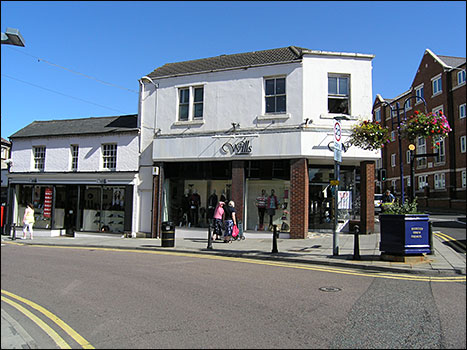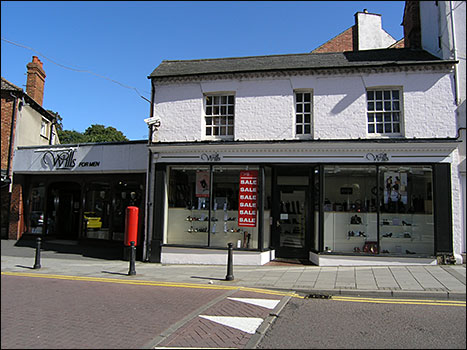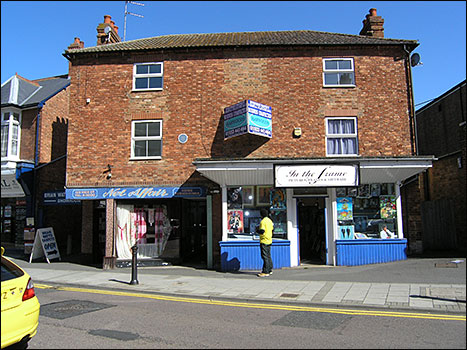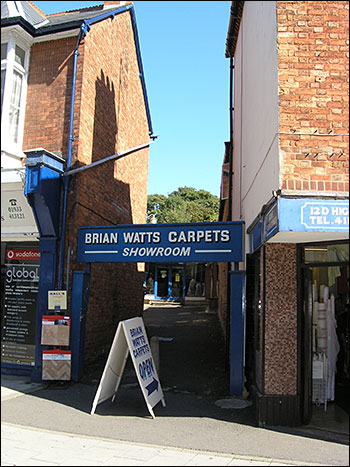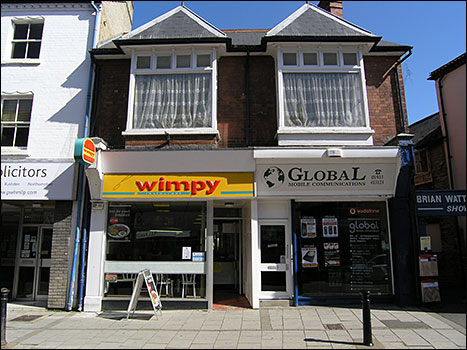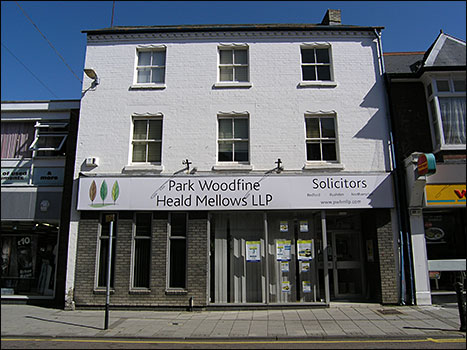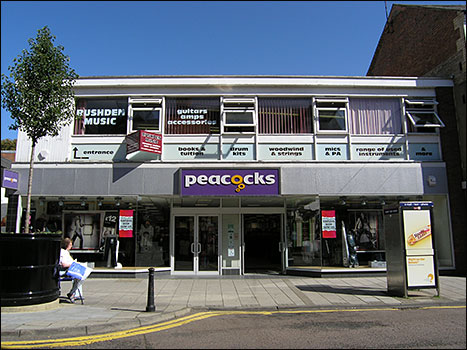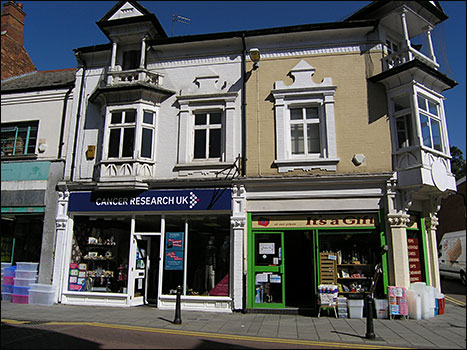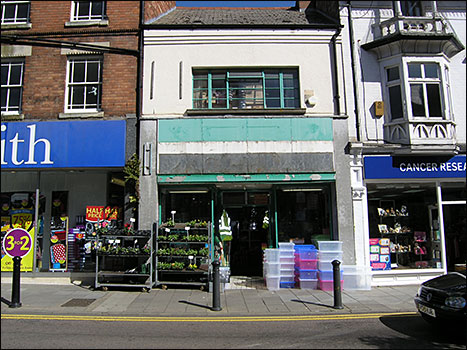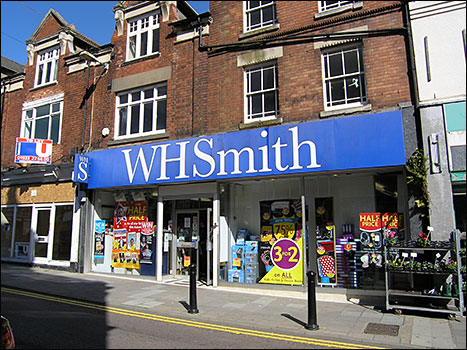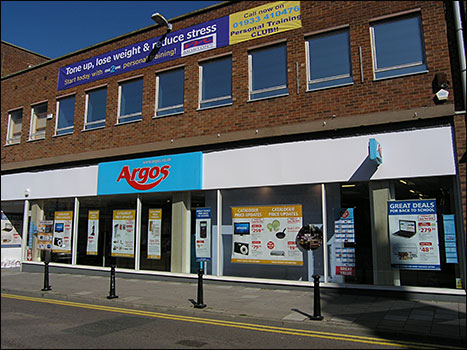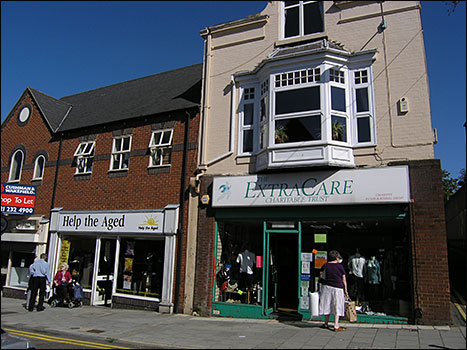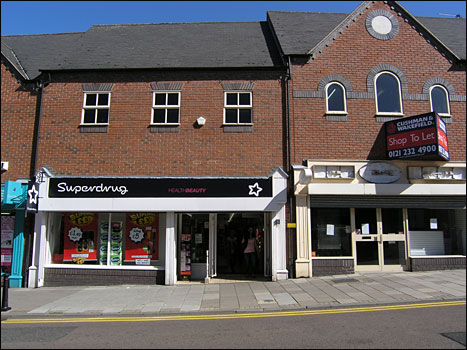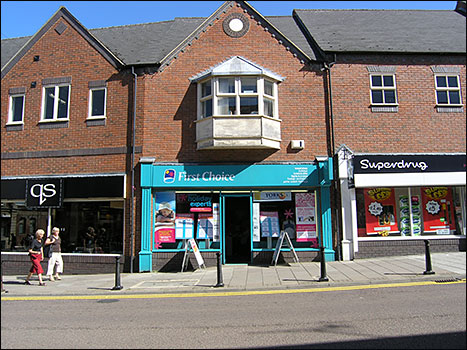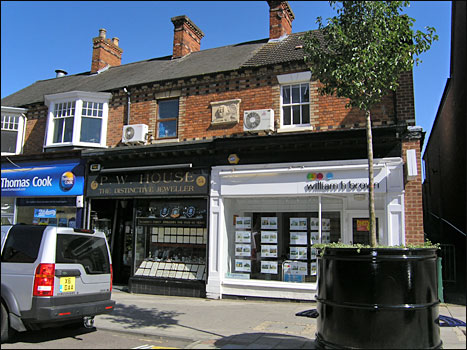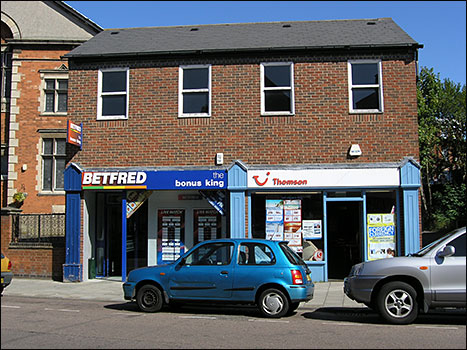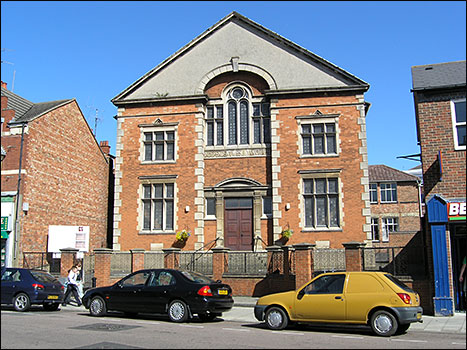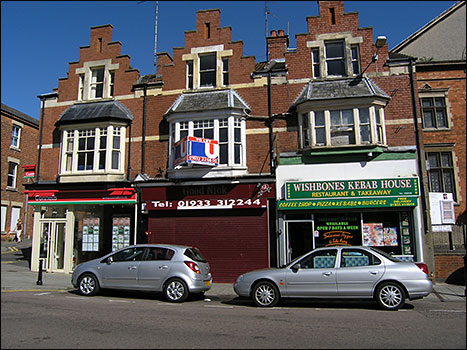with photographs by Robert Clark 2009
[For 2009 survey of Businesses]
Note: There had been changes between the two surveys and several further changes
in the decade since this survey.
Part 1
Rushden High Street, situated between Newton Road/Church Street junction at its south end and Higham Road at its north. Originally a secondary road of the village before the gradual growth, due to increased development from rural village to industrial town. Originally consisting of stone and thatched roofed buildings, many according to a book of 1811, set at right angles to the roadway, the photographs that survive show buildings in the more orthodox manner facing the road. There are no buildings surviving pre 1880 and the main commercial developments were late 19th century/early 20th century and resulted in a considerable street of late Victorian/early Edwardian appearance, though a number of excellent buildings have been lost sufficient remain, mainly above the fascias, to prompt the late John Betjeman to comment on its Edwardian appearance.
Above the fascia level the are some attractive architectural details still surviving, obviously in the past succeeding shopkeepers have modernised their properties into the latest trend at ground floor enhance the overall appearance of the street. Wherever architectural details survive they should be retained and maintained and new buildings should be designed sympathetic to the Edwardian concept.
Taking building by building there are very few that maintain their original appearance, the exceptions being the three Banks, one of which was built as the Post Office. Designed to impress in the High Victorian manner these buildings dominate the street even today, and would be considered as permanent in any future development, starting at the south end:
From the Church
| Details |
Photos
|
|
2 and 4
Maintained its original appearance with the exception of a small pediment on the corner at roof level.
6
A small commercial building of acceptable dimensions with original 1st floor sash windows, (4x4 panes) and with a sign-written fascia.
|
|
|
8
New single storey retail unit.
|
|
|
12
Premises set at an angle to the main road, possibly the oldest in the street, red brick, three storey, two blocked up windows, still with chimney stacks and pots.
12d
A small retail unit inserted at ground level next to entry giving access to premises in Rectory Road.
|
|
| A former warehouse building actually on Rectory Road, also has access from High Street but it is set back from other buildings. |
|
|
14
A good example above fascia level retaining two large bay windows with smaller panels in retail unit, the top under blue slate roofs with red ridge tiles, circa 1900.
|
|
|
16
Next a three storey block, painted brickwork, sash widows (modern shop front) chimney stacks reduced.
|
|
|
18
A run of the mill redevelopment in 1960, two stories and a flat roof.
Coffee Tavern Lane.
|
|
|
20-22
A major building in the High Street, retaining most of its original details including piers with foliated capitals flanking its corner set doorway and extremities of the property, rising three stories with bay windows at first floor level and ornate balconies on the second floor, ornate window surrounds complete this iconic building, the shop windows though large retain their original proportions in Coffee Tavern Lane, new plastic shop front to High Street. Blue slate roof.
|
|
|
24
Small two storey premises, single metal window above a fascia totally out of proportion.
[known as ‘Thing-Me-Jigz']
26-32
A block of red brick premises, five bays wide, first two retaining original sash windows at first and second floors beneath deep stone lintels decorated lower edges. Then three blocks, red brick decorative dormer windows, decorative stone brackets and deep string course beneath gutters, most widows retain original dimensions, one at least replaced by totally inappropriate plastic window.
|
|
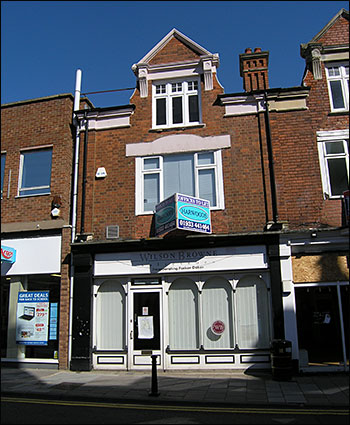 |
At ground floor level all shop fronts modern replacements the huge fascia of 'W H Smith' being the worst example of an excessively large fascia and lettering.
|
|
|
34-36
A large block of modern construction, two stories, red brick, single coping, flat roof, modern plain widows.
George Street |
|
38
Built 1901 |
|
Another modern redevelopment of no particular design, red brick with Gable like structures to the front, 'Gable' with Blue brick to roof line, windows with vertical blue brick course to top and base of windows, sting course of Blue bricks, at ground level, painted surfaces above fascias, some relief with two wooden bay windows at first floor level.
|
|
[redevloped by the Co-op in 1992 who owned the whole block and later also took over the modern block above.
Just two years later the Co-op left Rushden. Since then Beewise, QS, Store 21 - now Specsavers and Iceland] |
|
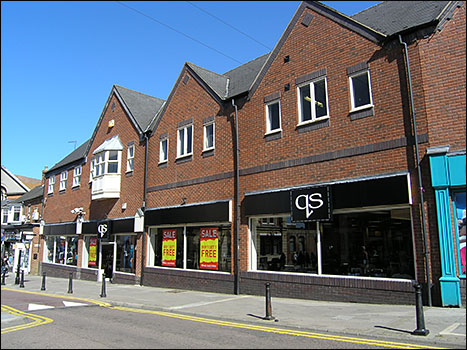 |
|
52-58 What is left, four units of a block of six called Lion Terrace, two stories, above a mixture of modern shop fronts, red brick with decorative 'string courses' of blue and white brick and similar brickwork at gutter level, retains two of the original bay widows with original glazing. Carved stone panel still in place recording its name. Original chimney stacks also survive. [the alley at the right of the block leading up ro rectory Road]
|
|
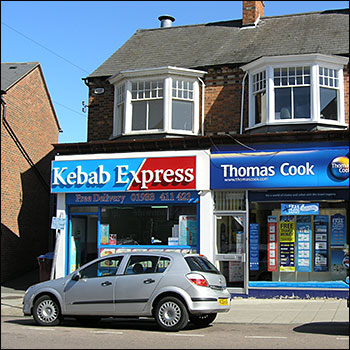
|
|
60
Entrance to Orchard Place Car Park, the two latest premises to be built, red brick, tiled roofs and no character. |
|
| Quite different - The Wesleyan Chapel, an imposing building with more architectural details than most premises in the High Street, red brick with stone dressings and stone windows and doorway, all appropriate to a Non-conformist Chapel, circa 1900. |
|
|
62-66
Another block of red brick, three units, two stories, the third floor being roof dormers built out large enough to be gable ends, in a square pattern, bay windows at first floor level one foreshortened, rest of glazing original, stone string courses and framing to dormer windows. All modern shop fronts of varying design. Other units in Queen Street.
Queen Street
|
|
|
